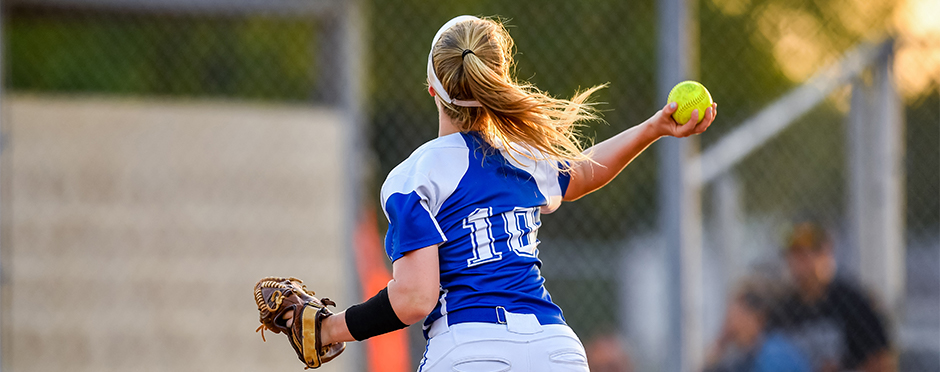
Offseason Training Tips for Overhead Athletes
Leave a CommentBaseball, softball, lacrosse, football, volleyball and tennis players all use overhead throwing in their sports. These athletes require power and strength for overhead positions in their dominant extremity.
With many sports currently on hold due to the COVID-19 pandemic, it’s a great time for athletes to consider cross-training. It has been shown to be beneficial for overhead athletes to participate in more than one sport due to the benefits of cross training. However, many young athletes are specializing in one sport for more than nine months of the year. In order to reduce the risk of injury from repetitive motions, such as overhead throwing, athletes should incorporate cross training into their routines.
Important muscle groups for overhead athletes:
- Core muscle strength
- Lower extremity strength and flexibility
- Shoulder muscle strength and flexibility
When throwing, more than 50 percent of the energy to the upper extremity is transferred from the core and the lower extremity muscles.2 Therefore, these muscles need to be both strong and flexible to help the athlete have optimal results. However, many young athletes are lacking in strength and flexibility of the posterior chain muscles that include the gluteals and hamstrings, as well as their core muscles.
Exercises to Strengthen the Gluteals and Hamstring Muscles
- Bridges: This exercises is good for both the glutes and hamstrings as well as the core muscles. Begin by lying on your back with knees bent. Lift the hips up off the ground. Make sure your core is tight and you are using the glute muscles to lift. Your body should stay in a straight line.
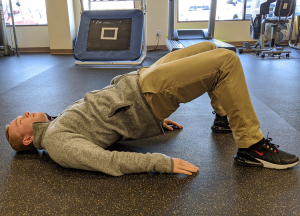
- Romanian Dead Lift: This exercise works the hamstrings. Begin by standing with your feet shoulder width apart, Make sure to keep your low back neutral or in a flat line and hinge forward from the hips. Your legs will remain fairly straight. Return to a standing position slowly. Increase the difficulty by adding weight or trying a single leg variation, as shown in the example below.
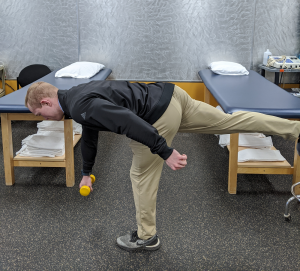
- Squats: Squats strengthen the glute muscles. Begin with your feet shoulder width apart and shift your weight backward as you bend your knees. When performing, ensure your knees do not go past your toes. In order to do this you must shift your weight back as if sitting in a chair. Variations for squats include changing your foot position, adding weight or lowering the depth of the squat.
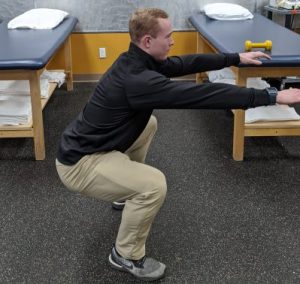
- Lunges: Strengthen the lower extremity muscles with lunges. To perform, step forward with your first leg and bend both legs so your body goes straight toward the floor with equal weight between your feet. Make sure your knee does not go past your toes. Variations include forward, side or curtsy lunges.
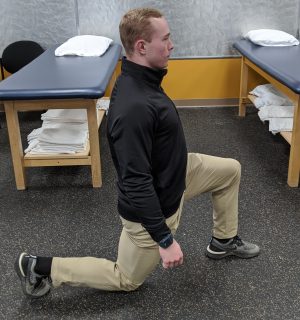
- Medicine Ball Chop: This exercise strengthens core muscles that help athletes twist during a throw. This can be performed standing or in a half kneeling position. For half kneeling position, you will begin with the medicine ball overhead to diagonal opposite of the knee that is up, as shown in the image below. Bring the ball across the body, over top of the knee that is up. Hold the medicine ball with both hands and work across the diagonal, keeping your core muscles tight.
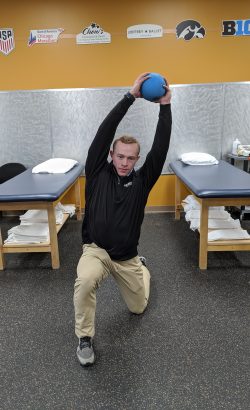
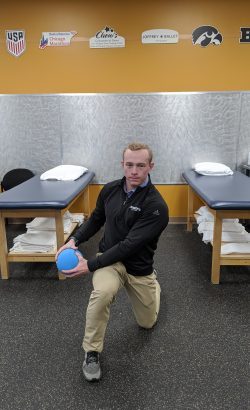
- Perform Upper Extremity Strengthening in Split Stance Position: Upper extremity strengthening should still be performed for overall shoulder health, but throwers can perform their routine in a functional split stance to simulate their throwing stance. Many throwers use resistance bands to perform their upper body strengthening, as shown in the example below.
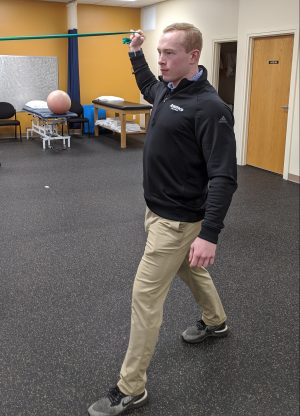
Stretching for Throwers
- Hamstring Stretch: A great static stretch for the hamstrings is sitting with one leg bent and reaching forward toward your toe. Try to keep your low back in a straight line, and prevent rounding through the back.
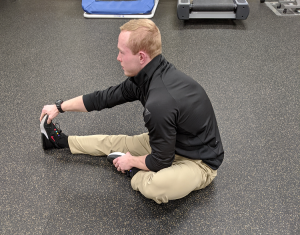
- Piriformis Stretch: lie on your back, cross your ankle over your opposite knee. Let the knee fall out to the side until a stretch is felt in your buttock near where your back pocket would be.
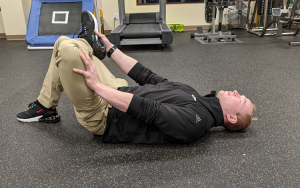
- Glute Stretch: Lie on your back. Bring one leg bent across the other, twisting through the low back as shown in the example below. Your shoulders and upper back will remain flat on the floor. You should feel a stretch across the buttock area of the leg that is crossed over top.
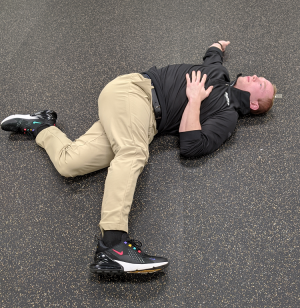
Reaching Peak Performance
By performing core and lower body strengthening and stretching during the off season, overhead athletes can help improve their biomechanics and the transfer of kinetic energy from their lower body to their arm. By optimizing this, athletes will protect their shoulder from unnecessary stress.
Should pain or injury occur at any time during your training, schedule a free assessment at Athletico. Our team will take a look at your condition and provide recommendations for treatment, which could include scheduling a video throwing analysis to help optimize throwing form.
Free assessments are available both in-clinic and virtually through our telehealth platform.
The Athletico blog is an educational resource written by Athletico employees. Athletico bloggers are licensed professionals who abide by the code of ethics outlined by their respective professional associations. The content published in blog posts represents the opinion of the individual author based on their expertise and experience. The content provided in this blog is for informational purposes only, does not constitute medical advice and should not be relied on for making personal health decisions.
References:
1. Jayanthi N, Pinkham C, Dugas L, Patrick B, Labella C. Sports specialization in young athletes: evidence-based recommendations. Sports Health. 2013;5(3):251-7.
2. Zaremski JL, Wasser JG, Vincent HK. Mechanisms and Treatments for Shoulder Injuries in Overhead Throwing Athletes. Curr Sports Med Rep. 2017;16(3):179-188.
3. Myer GD, Jayanthi N, Difiori JP, et al. Sports Specialization, Part II: Alternative Solutions to Early Sport Specialization in Youth Athletes. Sports Health. 2016;8(1):65-73
